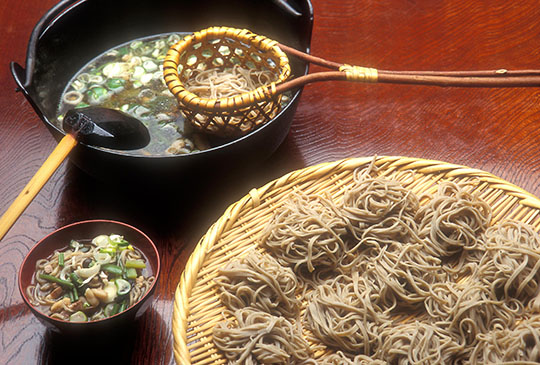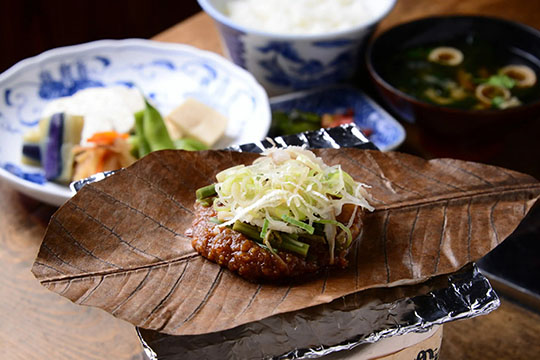Shinshu Soba
Nagano Prefecture is well-known for its high-quality buckwheat noodles, or soba, and the cool, dry mountain climate is excellent for growing the grain. Nagano soba is called Shinshu soba after the old provincial name for the area.
Restaurants throughout the region serve their own varieties of Shinshu soba, either in bowls of steaming hot broth, or cold with dipping sauce on the side. The dish is often accompanied by side dishes made with seasonal ingredients, including edible wild vegetables in the spring, mushrooms in fall, and pickled vegetables in winter. During the summer months, countless plates of chilled soba are served, often accompanied by wasabi and spring onions to be mixed into the dipping broth.

toji soba
Grilled Hoba Miso

Hoba miso is a local dish of the Hida region of Gifu Prefecture. Many variations exist, but it usually consists of homemade miso paste mixed with shiitake mushrooms and spring onions. The mixture is placed on a dried magnolia leaf and grilled over charcoal, then eaten with rice and small side dishes. Popular variants of the dish often include meat or fish on top of the miso mixture. The Hida region is also famous for its beef, which is said to rival Kobe beef in both flavor and texture, and grilled hoba miso topped with slices of Hida beef is a fixture on the menu of many restaurants in the area.
Hoba miso is believed to have originated as a result of food preservation techniques used during the harsh Hida winters, when pickled vegetables that had frozen solid were placed on a dried magnolia leaf along with miso paste and grilled. The moisture in the miso paste would prevent the leaf from catching fire while the pickles thawed.





 This mark shows the orign of distance (when sorting by distance) and/or tourist information centers.
This mark shows the orign of distance (when sorting by distance) and/or tourist information centers.